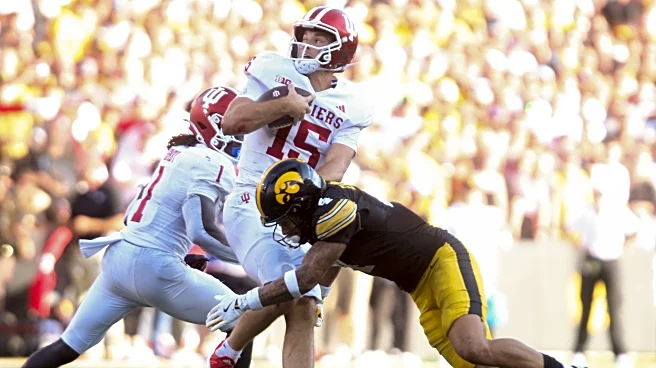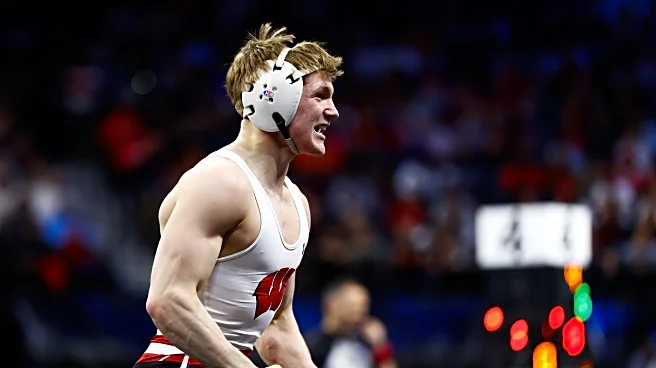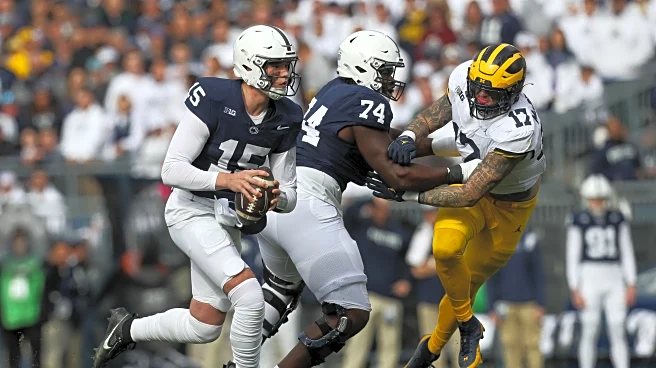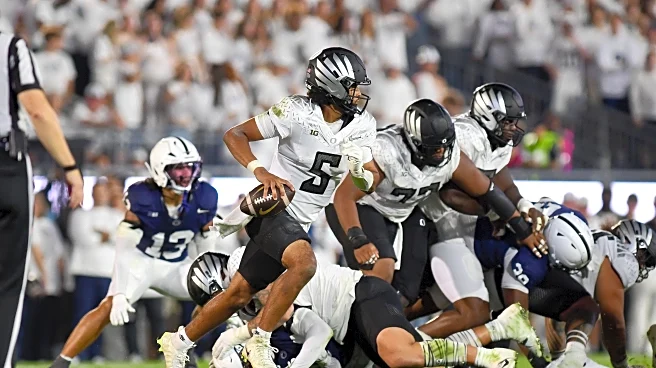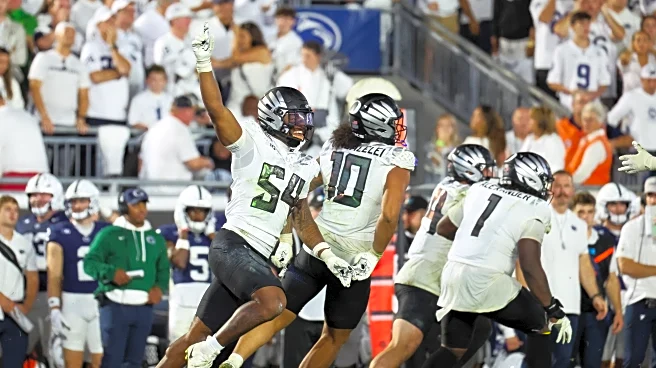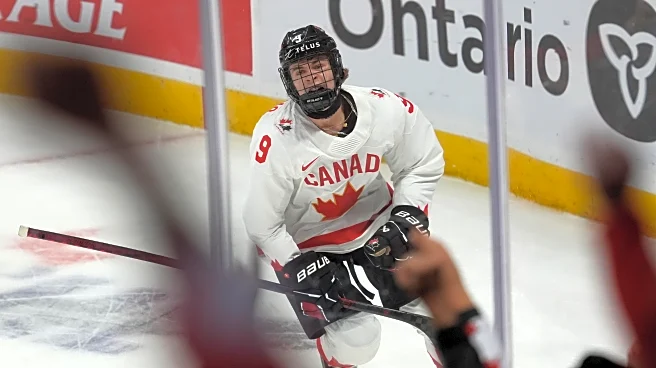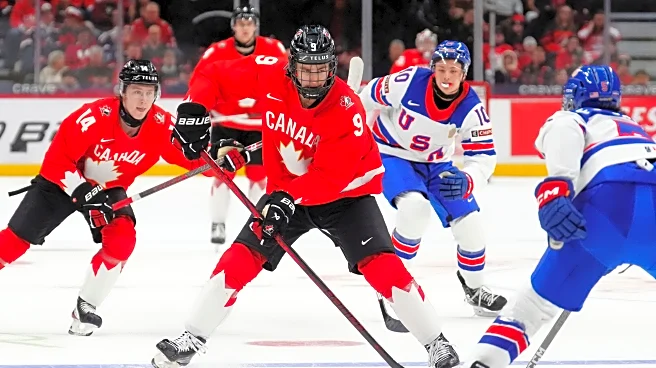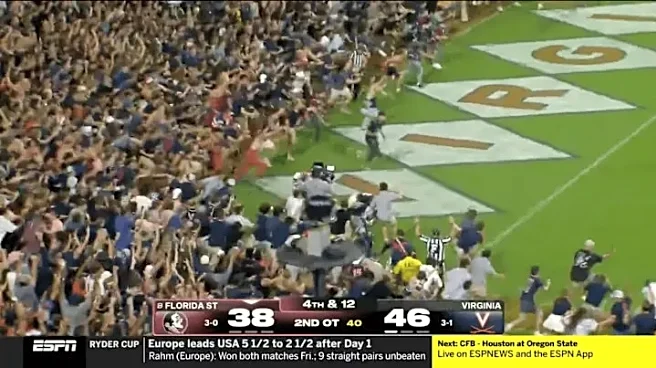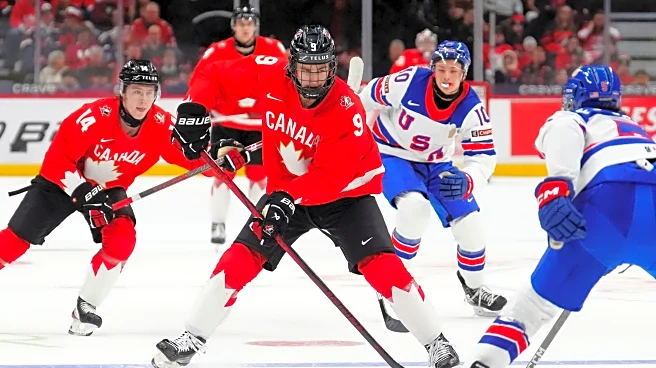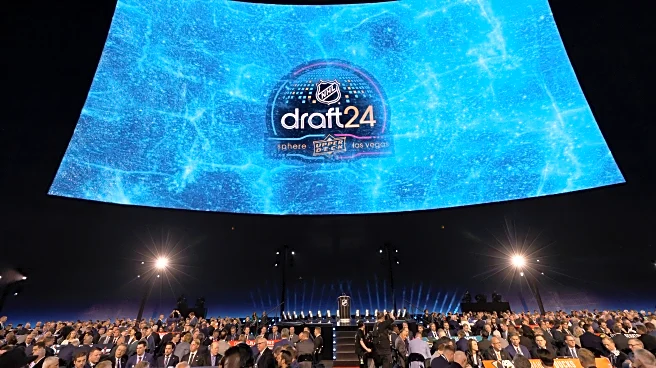The Big Ten will begin its 13th hockey season on Friday. Six of the seven teams will drop the puck on non-conference play, with only Ohio State idle this weekend. The conference is usually loaded with elite
NHL talent, but the rule change allowing CHL players to play NCAA hockey has given the conference a larger infusion of talent. With the season just two days out, here’s how the conference stacks up:
1. Michigan State
The two-time defending Big Ten regular season and tournament champions are poised to make it a three-peat. Michigan State will have to replace its top two goal scorers from a year ago. Isaac Howard (26 goals in 2024-25) departed for the NHL, as did Karsen Dorwart (13 goals). The Spartans return less than half of their goal scoring but do not lack for talent at forward. Porter Martone, Cayden Lindstrom, Lee Ryker, and Charlie Stramel are all first-round NHL draft picks in this forward core.
Michigan State returns the Big Ten’s best goaltender in Trey Augustine (.924 save percentage, 2.08 GAA, 3 shutouts in 2024-25) and a defensive corps that features four NHL draft picks. Augustine allowed more than three goals only twice last season. Unfortunately, one of those was Michigan State’s NCAA Tournament upset loss to Cornell, but the Spartans will not allow many track meet games during conference play.
2. Penn State
The nation’s Cinderella story from last season, Penn State returns more scoring production than any team in the conference. The Nittany Lions have arguably the best forward group in the country, which includes the projected No. 1 overall pick in the 2026 NHL Draft in Gavin McKenna. Beyond McKenna, Shea Van Olm, Lev Katzin, and Luke Misa join a Penn State program that is consistently among the highest-scoring teams in the NCAA.
Replacing Arsenii Sergeev in net is a question mark. Kevin Reidler transfers in from Omaha, although he is largely unproven as a starter. The defense should be improved with transfer Mac Gadowsky and 2025 first round selection Jackson Smith, though the injury to Cade Christenson is a major loss.
3. Michigan
Last year’s Michigan was not what we have come to expect from the Wolverines, as the team missed the NCAA Tournament for the first time since the 2018-19 season. Atrocious defense and goaltending combined with an average scoring offense ultimately pushed Michigan out of contention.
A strong core of forwards returns, including leading scorer TJ Hughes (15 goals in 2024-25), Michael Hage (13 goals), and Garrett Schifsky (11 goals). Malcolm Spence and Cole McKinney spearhead a solid freshman class. Scoring should not be a problem for this team, though Michigan ranked just No. 21 in the NCAA in goals per game a year ago.
The Wolverines have three fresh faces in net who have combined for one start at the NCAA level. Second round 2025 NHL Draft pick Jack Ivankovic has the highest upside, but we are not going to know what Michigan will get from its goaltenders until the season gets underway. If they can improve on the combined .895 save percentage from last year, the Wolverines are a sure-fire NCAA team and a Big Ten contender.
4. Minnesota
Minnesota lost over 100 goals from last year’s team, the most turnover of any team in the Big Ten. Brody Lamb (17 goals in 2024-25) and Brodie Ziemer (12 goals) return, but the lethal trio of Jimmy Snuggerud, Matthew Wood, and Connor Kurth departed. The Gophers have plenty of talent at forward, including eight NHL Draft picks, but the lack of continuity could be an issue early in the season.
Nathan Airey is likely to take over in net after a solid campaign last year (.900 save percentage, 2.47 GAA, 1 shutout). The defense must replace Sam Rinzel and Ryan Chesley, but Luke Mittlestadt should be able to assume the No. 1 defenseman role on this team. This feels like a rebuilding year for Minnesota, but the Gophers have enough talent to make some noise.
5. Ohio State
The Buckeyes quietly return the second-most production in the conference behind Penn State. A rough blowout loss to Boston University in the first round of the NCAA Tournament and a No. 16 ranking in the USCHO poll has most anticipating a regression for Ohio State.
Ohio State has only two NHL Draft picks on the roster, the fewest of any Big Ten team. Gunnarwolfe Fontaine (17 goals) departs, but a lethal offensive trio of Riley Thompson (17 goals), Davis Burnside (14 goals), and Max Montes (14 goals) is back. The Buckeyes should still be able to score consistently with their returning production and incoming transfer Adam Eisele (13 goals).
Kristoffer Eberly looks to take over as the starting goalie after posting a .915 save percentage in 17 starts last year. The Buckeyes may not be as good as last year, but quality goaltending will keep them afloat.
6. Wisconsin
Mike Hastings’ Badgers fell off a cliff last year, finishing 8 games below .500 after making the NCAA Tournament in 2023-24. Wisconsin returns a talented forward group, including leading scorer Quinn Finley (20 goals).
Where the Badgers must improve is in net. Wisconsin had the worst save percentage in the Big Ten (.888) and finished tied for 54th among 64 NCAA teams. Eli Pulver came in from Minnesota State to help boost the team’s goaltending, but all three of Wisconsin’s options are unproven. Until the Badgers can show their goaltending has improved, their ceiling is likely sixth place in the conference.
7. Notre Dame
Notre Dame was the only team in the conference to make a head coaching change, as Jeff Jackson retired after 20 years at the helm. Brock Sheahan takes over a rebuilding team. The forward group is talented, including NHL Draft picks Danny Nelson (13 goals) and Cole Knuble (12 goals). The Fighting Irish finished last in the Big Ten in scoring a year ago, with just 2.7 goals per game. Perhaps a new voice behind the bench will help them.
The defense is likely to be a liability for this team once again, as Notre Dame finished 63rd out of 64 teams in shots on goal allowed. There is continuity on the blue line, but with a bevy of elite offenses in this conference, drastic improvement will be required for them to compete. Owen Say is gone in net after posting a .920 save percentage behind one of the worst defenses in hockey a year ago. Nicholas Kempf (.895 save percentage) is set to assume the starting role, but unless he can replicate Say’s numbers, Notre Dame is likely to allow the most goals in the Big Ten again.

